 Mysteries
Mysteries  Mysteries
Mysteries  History
History 10 Surprising Stories About the Texas Rangers
 Humans
Humans 10 Philosophers Who Were Driven Mad by Their Own Theories
 Miscellaneous
Miscellaneous 10 Video-Game-Worthy Weapons and Armors from History
 Weird Stuff
Weird Stuff 10 Psychics Who Accurately Predicted Wartime Events
 The Arts
The Arts 10 Pieces of Art Inspired by a Broken Heart
 Health
Health 10 Science Fiction-Sounding New Medical Treatments
 History
History 10 Surprising Facts About the Father of Submarine Warfare
 Space
Space Ten Astonishing New Insights into Alien Worlds
 Weird Stuff
Weird Stuff 10 Bizarre Summer Solstice Rituals Still Practiced Today
 Mysteries
Mysteries Top 10 Haunting Facts About the Ghost Ship MV Alta
 History
History 10 Surprising Stories About the Texas Rangers
 Humans
Humans 10 Philosophers Who Were Driven Mad by Their Own Theories
Who's Behind Listverse?

Jamie Frater
Head Editor
Jamie founded Listverse due to an insatiable desire to share fascinating, obscure, and bizarre facts. He has been a guest speaker on numerous national radio and television stations and is a five time published author.
More About Us Miscellaneous
Miscellaneous 10 Video-Game-Worthy Weapons and Armors from History
 Weird Stuff
Weird Stuff 10 Psychics Who Accurately Predicted Wartime Events
 The Arts
The Arts 10 Pieces of Art Inspired by a Broken Heart
 Health
Health 10 Science Fiction-Sounding New Medical Treatments
 History
History 10 Surprising Facts About the Father of Submarine Warfare
 Space
Space Ten Astonishing New Insights into Alien Worlds
 Weird Stuff
Weird Stuff 10 Bizarre Summer Solstice Rituals Still Practiced Today
Top 10 Explosive Historical Facts And Calamities About Dynamite
Since it was patented in 1867, dynamite has seen wide-scale use as a powerful explosive and a much safer alternative than what was previously employed. Even today, dynamite is used in demolition, construction, mining, and quarrying.
Despite the groundbreaking achievements its volatile forces made possible, carnage and mayhem have cast a shadow on this innovative implement. The following stories examine dynamite’s historical significance and the utter horror its creation has spawned since its inception.
10 Blast Fishing

First introduced by European armies, blast fishing is a destructive technique that continues to fill impoverished stomachs in many parts of the world. During World War I, soldiers would throw grenades into lakes and ponds to retrieve fresh fish for meals. Though that practice is generally illegal in many nations these days, it continues to be a growing problem in areas where poverty is rampant and dynamite is readily available.
In Tanzania, for example, mining and construction have allowed a resurgence for the desperate to resort to blast fishing. In 2014, the World Wildlife Fund conducted a six-week pilot acoustic study in the African nation and found an estimated 19 blasts per day in only a small stretch of water.
Over the last 20 years, fishermen throughout Africa and Asia have taken to dropping sticks of dynamite at night when detection is minimal. The consequences of such actions are profound, leaving craters in coral reefs and killing far more fish than can be harvested.
Ironically, the practice is often futile because the majority of fish sink to the bottom following the rupture of their air bladders and internal organs. Those that don’t sink are found inedible and decaying at daylight as they litter the top of the water.[1]
9 Tunnel Excavation
Tunnel excavation dates back as far as 2800 BC, with settlers in Jerusalem and Mycenae, for example, burrowing to find water. Understandably, it was quite an arduous task. Laborers relied on iron, fire, boiling water, and vinegar to weaken the foundation of the land in such primitive times.
It wasn’t until the 17th century that “technology” slightly advanced with the introduction of hammers and chisels. In 1627, the first experiments with gunpowder began. Then, in 1857, the first hydraulic drilling equipment was used during the excavation of a 12-kilometer-long (7.5 mi) tunnel connecting Italy and France.
Soon after, Alfred Bernhard Nobel recognized the significance of nitroglycerin and its potential in mines and quarries. He sold the unstable liquid under the trade name “blasting oil.” Following his invention of the detonator in 1862, Nobel realized that further measures were needed to assure the safety of miners and workers.[2]
During transport, the volatile instability of nitroglycerin caused many men to be injured or killed. Thus, by mixing the liquid into porous diatomaceous earth in 1867, Nobel was able to create dynamite, a desirably stable explosive.
Along with dynamite being considerably safer, the force of the blast was significantly improved, allowing for tunnel advancement to be more rapid and efficient. Later, dynamite would become a vital commodity in times of war and bloodshed.
8 Ingredients

Dynamite is comprised of different explosive essences, many of which have surprising beneficial factors. For example, one vital component of the explosive is nitroglycerin.
Aside from being a colorless, oily, and volatile liquid used to blow things to smithereens, nitroglycerin serves a valuable purpose as a heart medication. In 1879, London physician William Murrell noted similarities with amyl nitrite, a chemical compound that helps relieve chest pain.
Dr. Murrell began carrying out several studies with nitroglycerin on himself. Soon after, he became the first to recommend the liquid as a treatment for angina (pain or pressure in the chest).[3]
Following nitroglycerin’s release into the British Pharmacopoeia, pharmaceutical chemist William Martindale determined it was vital to produce “a more stable and portable preparation.” Using 1/100th of a grain of nitroglycerin, Martindale infused the substance into chocolate, both relieving one’s chest pain and hunger.
Interestingly enough, peanuts are another ingredient that can be used in dynamite. Although not indispensable given that other ingredients can be used, the oil from peanuts makes glycerol, which can be used in the process of synthesizing nitroglycerin.
7 Raining Whale Blubber
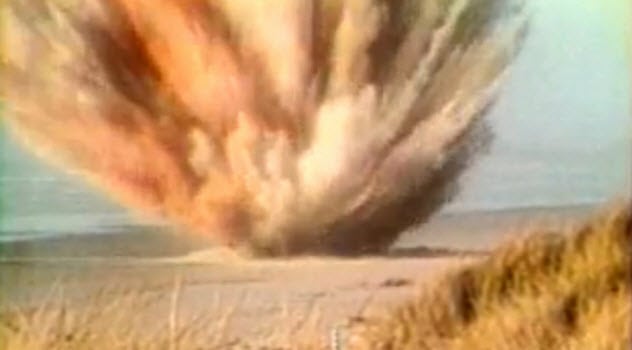
In 1970, a dead whale measuring 14 meters (45 ft) and weighing 8 tons washed ashore on a beach near Florence, Oregon. As the days slowly passed with authorities contemplating how to remedy the situation, the carcass began to give off a stench so revolting that desperate measures had to be taken.
As determined by Oregon highway engineer George Thornton, the best course of action was to blow up the whale. This would allow scavengers to eat the disintegrated remains. Uncertain as to the quantity of explosives to use, Thornton settled for a modest 20 crates of dynamite (0.5 tons).
As dozens of spectators stood beachside, the whale was detonated, creating an unanticipated massive explosion. Rather than the expected cremation, enormous chunks of whale blubber rained down from the sky onto crying and disgusted spectators. They were covered in odorous flesh and blood.[4]
Meanwhile, a sedan parked 0.40 kilometers (0.25 mi) away was crushed by a large piece of the dead animal. Surprisingly, no one was injured in the spectacle—other than Thornton and his reputation. The aromatic incident, which was caught on film, has since been regarded as the first viral video after years of being widely dubbed an urban legend.
6 Three Shots
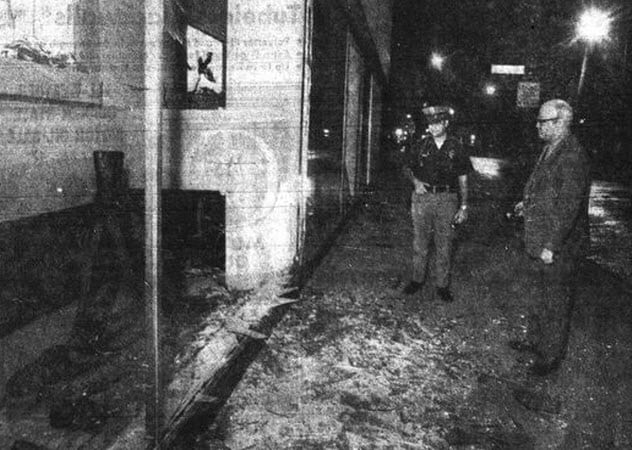
Tensions were at an all-time high on a September evening in 1970 when incensed union workers began a strike against Tri-State Motors of Joplin, Missouri. That night, a tractor trailer driven by John A. Galt just happened to be at the wrong place at the wrong time.
Amid a sea of angry protesters on Interstate 44, Galt crossed the Teamsters picket line, further enraging the crowd. Moments later, Bobby Lee Shuler and Gerald Lee Bowden, two striking union truck drivers, followed in pursuit before pulling off the interstate onto an exit ramp.
With Galt in his sights, Shuler fired two shots from his rifle at the tractor trailer. He was unaware that the truck was carrying 21 tons of dynamite. On the third shot, Galt, a father of four, was instantly vaporized.
The intensity of the blast knocked Shuler to the ground and shattered building windows 19 kilometers (12 mi) away. Realizing their dreadful predicament, Shuler and Bowden attempted to flee, only to find that their truck had broken down. With airplanes circling above and police dogs closing in, the men gave themselves up to authorities without incident.
Later, Shuler testified that it was not his intention to do bodily harm to anyone and that he was unaware of the truck’s cargo. Nonetheless, he was convicted of second-degree murder in 1971 and sentenced to 99 years in prison.[5]
Bowden was also convicted of second-degree murder. However, he received a lighter sentence of 10 years. Just four years later, Bowden was released from prison. Four years after that, in 1979, Shuler was released as well.
5 The Exploding Rat
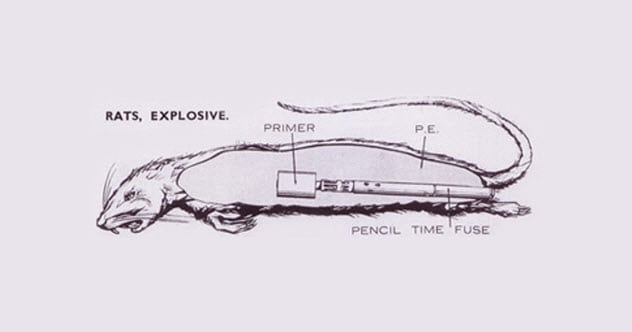
By 1941, England was heavily bombarded by German forces. With Allied shipping routes in dire straits due to enemy U-boats and the constant bombing of British cities from above, desperate but clever measures were sought to halt the unrelenting German war machine.
The year prior, Minister of Economic Warfare Hugh Dalton officially formed the Special Operations Executive (SOE), which led to a brilliant but seemingly impossible task—to blow up German boilers with the use of dead rats. The proposal was to insert dynamite into the rodents and then have the rats covertly placed by the boilers in enemy U-boats.
By laying the rat on the coal beside the boiler, a German soldier would unsuspectingly shovel the rodent into the fire and ignite the fuse to the explosive. How the British would be able to gain access to the boilers in the first place is unknown.
As dead rats were not littering the streets or falling from the sky, British intelligence misled a London supplier, who was under the impression that the carcasses were for London University. Unfortunately, the “exploding rat” plan, which is now immortalized in the history of the SOE, never made it to fruition because the first consignment was seized by the Germans.
After the rats’ cover was blown, the Germans began relentlessly searching for rodent explosives. Some of the seized carcasses were exhibited at top German military schools because they admired such an original and lethal design.[6]
4 Grizzly Executions

By the end of the 19th century, the population of grizzly bears was drastically declining in the United States. Often, they were killed without a second thought due to a lack of knowledge that they needed to be conserved.
When Yellowstone was established as the first US national park in 1872, grizzlies were treated as a silly spectacle for tourists, a notion that would persist for several decades. In 1916, 61-year-old government laborer Frank Welch became the first documented death by a grizzly in Yellowstone, which furthered the disdain toward these carnivores.
Following Welch’s gruesome mauling, fellow laborers decided that the bear needed to “die for his crimes.” In what would become the park’s first extensively documented “execution” of a grizzly, the men placed edible garbage beside a barrel filled with dynamite. When “Old Two Toes” arrived for his meal, the men ignited the dynamite, blowing the bear into a thousand little pieces.
Such practices became commonplace in the national park until a rapidly growing environmental movement in 1962 popularized the idea that grizzlies should be preserved. In 1967, however, two 19-year-old girls camping 16 kilometers (10 mi) apart from one another were killed by separate bears while they slept. This further spawned a series of grizzly bear executions in the greater Yellowstone region.[7]
3 Injustice

Under the leadership of Bill Ayers, the Weather Underground, a left-wing group that launched a domestic bombing campaign in the 1960s and ‘70s, advocated for the complete overthrow of the United States government. Using dynamite, the group managed to bomb the Capitol Building, the state Department of Corrections in Albany, the NYPD headquarters, and the Pentagon. Simultaneously, they targeted the “Rockefellers, Oswalds, Reagans, and Nixons” of the world.
“The myth, and this is always Bill Ayers’s line, is that Weather never set out to kill people, and it’s not true—we did,” said group member Howie Machtinger. “You know, policemen were fair game.”[8]
Without one particular individual, however, none of the bombings could have taken place. Ronald Fliegelman, the “bomb guru,” meticulously built explosives for the Weather Underground using sticks of dynamite and cheap alarm clocks bought from RadioShack.
By 1977, the fanatical group that pushed for a sexual revolution completely dissolved and Fliegelman faded into obscurity. For 25 years, the guru’s identity remained a mystery until it emerged that he had been working as a special-education teacher in New York. Unfortunately, by that time, Fliegelman did not have to worry about paying the price for his horrifying crimes due to the five-year statute of limitations.
As infuriating as it may be, he remains unapologetic to date and frankly is “proud of what he did.” At 73 years old, Fliegelman is retired. He collects a pension of over $40,000 a year while living a short distance from where he created such destruction and mayhem.
2 An Appalling Cover-Up
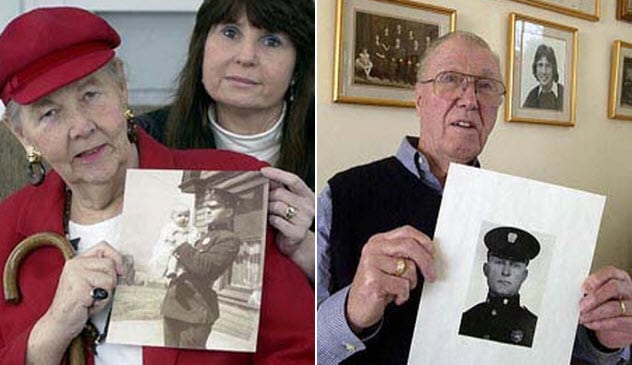
For nearly 80 years, one of the worst prison riots in Pennsylvania history was swept under the rug by a humiliated state government. It all began on February 11, 1924, when three inmates smuggled pistols and dynamite into the Western Penitentiary via tea cans.
Though it’s unsubstantiated as to how they managed to do so, many believe that a complicit prison administration and an inmate’s girlfriend were involved. When the prisoners ignited the dynamite to burrow through the wall, two guards rushed to the scene, believing that a gas leak explosion had occurred.
When they arrived at the south end of the prison, they were executed. After two hours of mayhem, guards regained control of the penitentiary. The three inmates were ultimately convicted of murder.
In the days that followed the explosion, newspapers across Philadelphia romanticized the events by describing the crimes as the work of “The Four Horsemen,” neglecting to mention the lives of the two murdered men, 35-year-old Deputy Warden John Pieper and 29-year-old Yard Sergeant John T. Coax. For nearly eight decades, the memory of Pieper and Coax was erased from Pennsylvania history.
Despite pleas from family members to commemorate their fallen loved ones, the state persistently ignored their appeals in an attempt to cover up the riot. Finally, in 2003, the officers were officially acknowledged by the state. In the prison’s administration building, plaques honoring both men are now hanging beside tributes to two other guards who were killed in 1965 and 1973.[9]
1 ‘The Crime Of The Century’
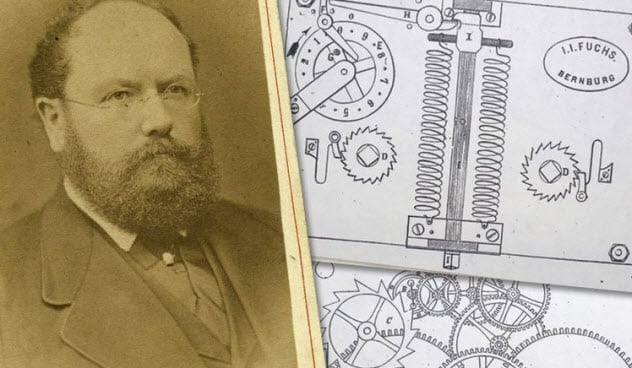
William King Thomas—American businessman, charlatan, and thief—knew no bounds when it came to ruining someone’s livelihood for a quick buck. The remorseless con artist, whose real name was Alexander Keith, had fled to Germany in the 1870s when his victims caught on to his conniving ways.
As time passed while he was on the lam, so did his funds. This prompted the embezzler to revert to his illicit yet lucrative pastime. With a new scheme in motion, Keith filled a heavy barrel containing dynamite with the intention of damaging a passenger ship to collect marine insurance.
After boarding the Mosel on that cold December day in 1875, Keith retired to his cabin expecting a financial windfall. Then the unthinkable occurred.
With family, friends, and well-wishers filling the docks to wave goodbye to their departing loved ones, a careless longshoreman accidentally dropped the barrel on the dock while attempting to load the cargo. That second, 81 people were incinerated with 50 more injured.
Observing the carnage from the blast, which was heard 100 kilometers (62 mi) away, Keith stumbled back to his room in a horrified daze and shot himself twice in the head. A suicide note found beside his body simply read, “What I have seen today I cannot stand.”[10]
Adam is just a hubcap trying to hold on in the fast lane.
For more explosive dynamite stories, check out 10 Tragedies Caused By Dynamite and 10 Bizarre Exploits Of Hunter S. Thompson.








